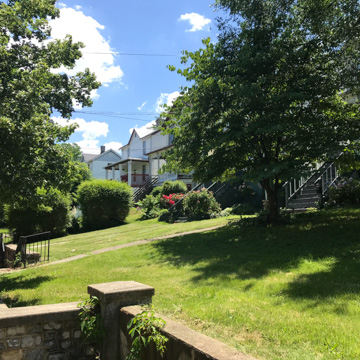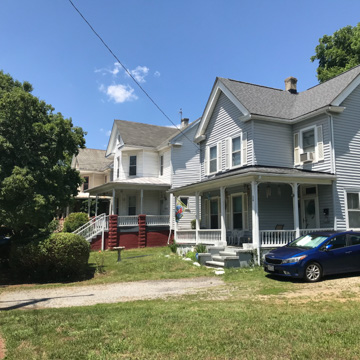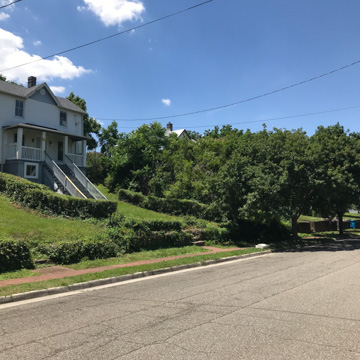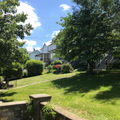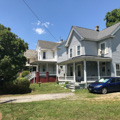Almost all of the turn-of-the-twentieth-century houses around Railroad Hill were constructed by the Roanoke Land and Improvement Company, a development subsidiary of the railroad. They are part of Gainsboro, now incorporated into Roanoke, but once a small mid-nineteenth-century community. From its beginnings, the neighborhood was a diverse ethnic community, but is now predominantly African American. Gainsboro, knit by starbrick sidewalks and mature trees and shrubs, has an architectural unity that defines an established neighborhood. The houses are generally single-family, two-story frame buildings with front porches featuring turned posts and often having sawn-baluster railings. Gables, dormers, stained glass transoms over entrances, and an occasional facade of rock-faced concrete block are repeated in slightly varied ways.
You are here
Gainsboro Neighborhood Houses
Late 19th-early 20th century. Bounded by N. Jefferson and NE 2nd sts. and Gilmer and Patton aves. NE
If SAH Archipedia has been useful to you, please consider supporting it.
SAH Archipedia tells the story of the United States through its buildings, landscapes, and cities. This freely available resource empowers the public with authoritative knowledge that deepens their understanding and appreciation of the built environment. But the Society of Architectural Historians, which created SAH Archipedia with University of Virginia Press, needs your support to maintain the high-caliber research, writing, photography, cartography, editing, design, and programming that make SAH Archipedia a trusted online resource available to all who value the history of place, heritage tourism, and learning.












